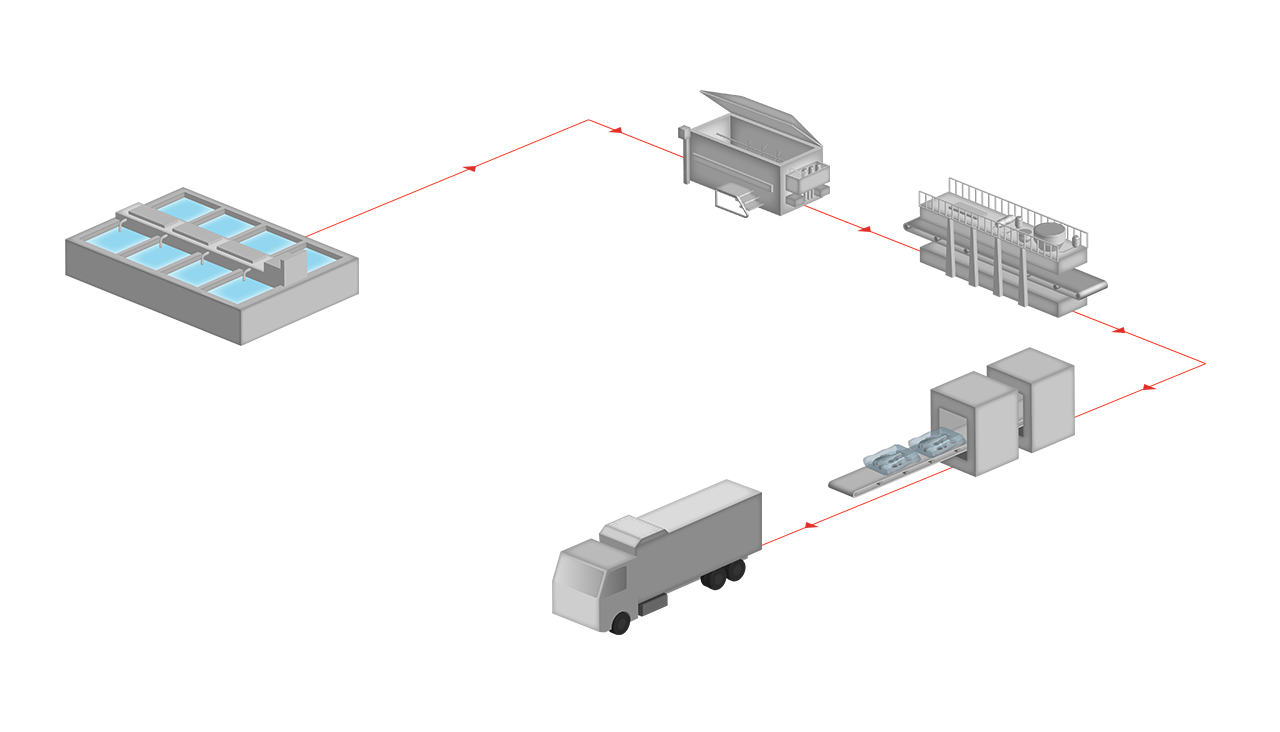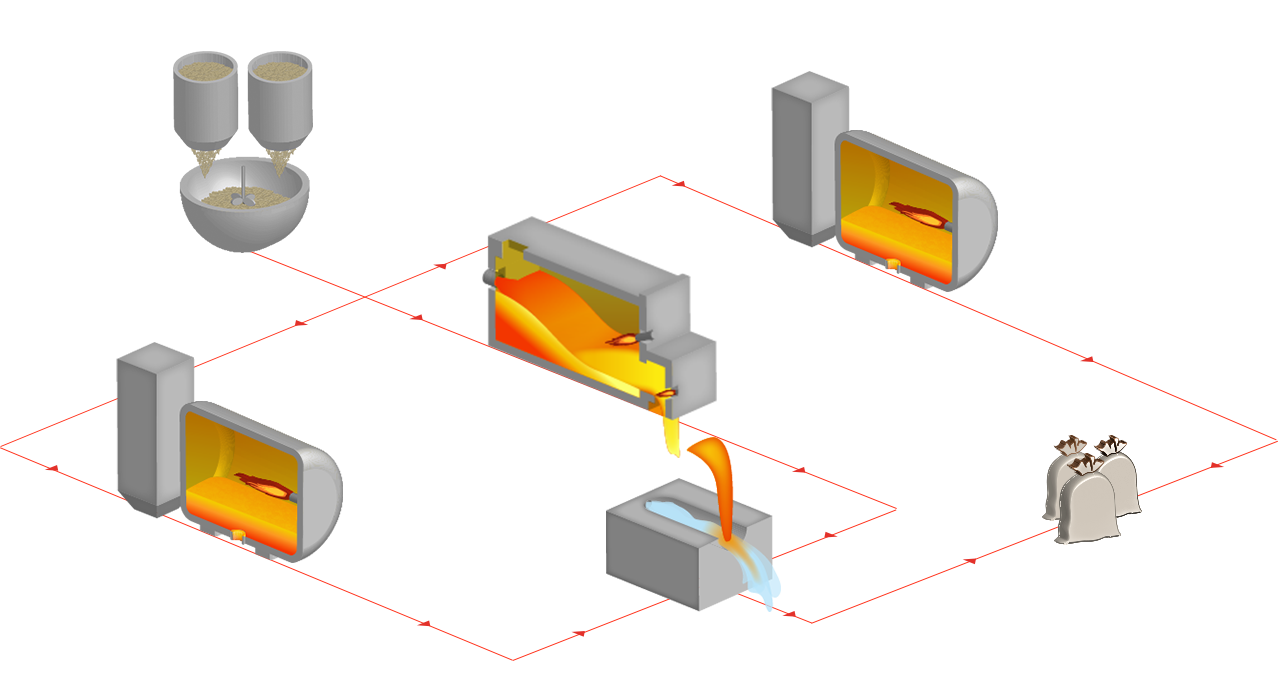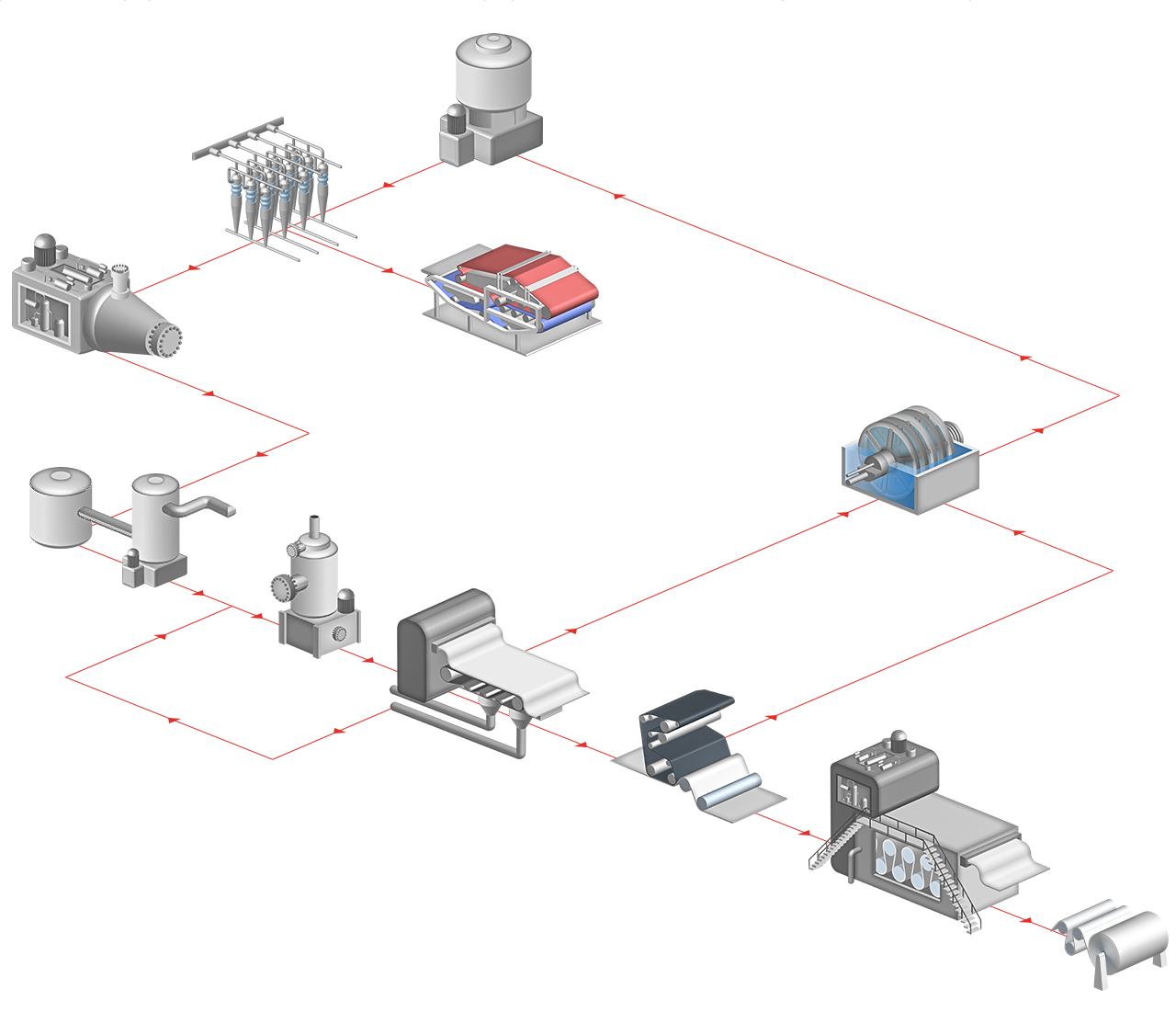All customerprocesses that use gases - Strategic application technology
Nested Applications
Nested Applications
Categories Navigation
Asset Publisher
Fish and seafood process chart
The term fish is used to summarise all types of fish which are suitable for human consumption. A distinction is made between freshwater fish and saltwater fish depending on the habitat. Gases from Messer are used throughout the entire process chain, from fish farming to the cooled transport of the marine life.
Frit and color pigment
In the frit- and mineral colour pigment production, the raw materials of the batch are generally stored in silos. Based on the recipe the components are charged into a mixer in a pre-defined order to eliminate separation. The mixed batch is then transported to the batch charger – usually of screw type – and fed, in a certain amount for each charge, to a smelting aggregate, which may be a hearth furnace or a rotary furnace . In case of colour pigments, the smelting aggregate is generally a rotary furnace. The batch is melted in a melting area what can be air-fuel or oxy-fuel fired. After a pre-defined melting time, the material is withdrawn from the furnace through a heated throat (in case of a hearth furnace) or poured out from the drum of the rotary furnace and quenched with water on a chute or a conveyor . The powdery product is collected in big bags or – after performing a drying measure out into a paper bag.
In case of frit we distinguish three different types:
a. Ceramic/glass frit
b. Enamel frit
c. Low melting point frit
The major components, depend on the different types of frit, are:
- Feldspar, sand, calcium carbonate, dolomite, zinc oxide, zirconium compounds for ceramic/glass frit
- Sand, borax, titanium oxide, sodium nitrate and different fluorides for Enamel frit
- Red lead (Pb3O4), sand, zinc oxide, boric acid for low melting point frit
Heat treatment non-ferrous metals in the non-ferrous metals sector
Many metals acquire their optimum surface quality and the required mechanical properties through suitable heat treatment. Here, gases are an indispensable aid. Messer Group has developed a wide range of special processes to make the heat treatment of metals more controllable, reproducible, and economical.
The term heat treatment describes a process in which a work piece or part of a work piece is intentionally subjected to a specific time-temperature sequence. In some instances, the work piece may additionally be subjected to other physical and/or chemical influences. The aim of heat treatment is to impart properties to a work piece which are required for further processing steps or for the intended application.
This definition covers all thermal, thermo-chemical and thermo-mechanical processes for the treatment of work pieces with which mechanical material properties are to be selectively changed. Furthermore, the appearance of the surface of work pieces can be influenced. These properties are optimized by structural transformations on the surface or in the entire work piece and by chemical changes on the surface.
Heat treatment takes place in furnaces that are temperature controlled (heating, soaking and cooling steps), usually using a process gas atmosphere to prevent, e.g. undesirable discoloration or to alter the surface chemically. The influenceable properties are, e.g. deformability, residual stresses, hardness, toughness and surface condition.
Paper production
On the paper machine, paper is produced out of processed plant fibers (mechanical, chemical pulp, recycled fibers). At first fibers are distributed in water, pre-treated, mixed with other raw materials and - after further dilution and making the water/fiber mixture as uniform as possibly - introduced to the headbox. From there, this suspension is brought to the wire where sheet forming and the first step of dewatering takes place. Further dewatering steps are carried out in the press section and the drying section. In the water circuit of the paper machine the major amount of water used for paper making is recovered.





